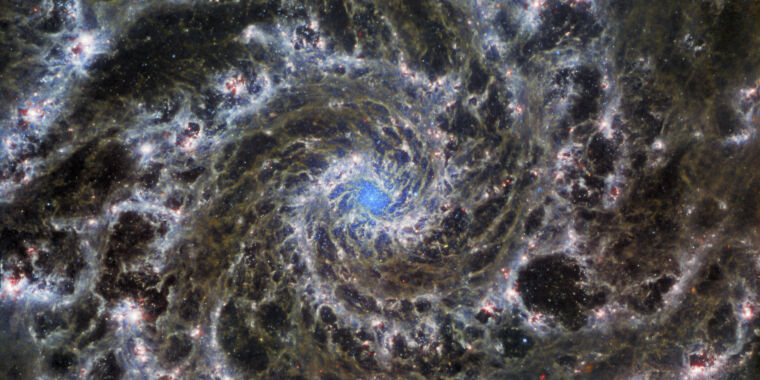The Enigma of Galaxies
One of the most intriguing enigmas in the field of astrophysics centers around the discrepancies observed in galaxies. Despite the successful application of Newton’s law of gravity to the visible matter within galaxies, these galactic structures rotate at speeds far exceeding what is predicted by conventional physics familiar within our Solar System.
The Concept of Dark Matter
In an attempt to reconcile these inconsistencies and prevent galaxies from disintegrating, scientists have postulated the existence of a mysterious entity known as dark matter. Dark matter, an invisible substance that has never been directly observed, is believed to provide the additional gravitational pull necessary to maintain galactic cohesion. Intriguingly, the Standard Model of particle physics, which has been remarkably successful in explaining various phenomena, does not contain any particles that could account for dark matter.
The Emergence of Alternative Theories
Given the elusive nature of dark matter, alternative theories have emerged to explain the galactic anomalies. Among these theories is Milgromian dynamics, also known as Mond, formulated by physicist Mordehai Milgrom in 1982. Mond proposes a modification in the behavior of gravity, particularly at low accelerations experienced at the peripheries of galaxies. While Mond has shown some success in predicting galaxy rotation without the need for dark matter, recent research has cast doubt on the viability of this theory.
The Testing of Mond
Efforts to test the validity of Mond have been ongoing, with a crucial focus on the distinctive way in which this theory alters gravitational behavior. Unlike conventional physics, Mond does not operate based on a fixed distance but rather becomes apparent at lower accelerations. At greater distances from celestial objects, such as stars, planets, or galaxies, the modified effects of Mond should manifest, providing a unique opportunity for testing its accuracy.
The Cassini Mission
An intriguing avenue for testing Mond lies in analyzing data from the Cassini mission, which orbited Saturn from 2004 until its dramatic descent into the planet’s atmosphere in 2017. Saturn, positioned at a distance of 10 astronomical units (AU) from the Sun, was an ideal candidate for observing potential gravitational deviations predicted by Mond. By measuring radio pulses between Earth and Cassini, scientists aimed to detect subtle deviations in Saturn’s orbit that could indicate the presence of Mond effects.
Despite the high hopes pinned on this mission, the data collected by Cassini did not reveal the anticipated anomalies consistent with Mond. Saturn’s orbit behaved in accordance with Newtonian expectations, showcasing the enduring effectiveness of Newton’s laws in describing planetary motion.
Image/Photo credit: source url





